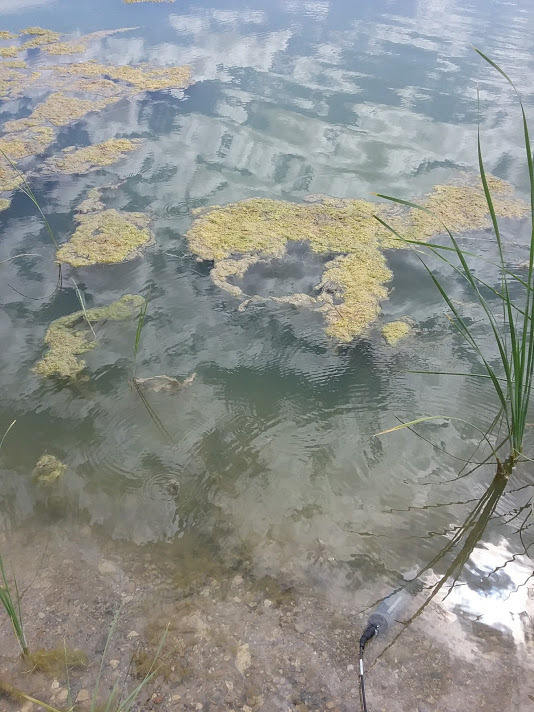An advisory issued by the Utah Department of Environmental Quality on Monday, Sept. 9, advised Utah Lake visitors to stay out of the water until the end of September.
The advisory cites possible health risk from contact with the cyanotoxins in an algal bloom as the reason behind the warning.
Algal blooms are not always dangerous, but Utah Department of Environmental Quality spokesperson Jared Mendenhall said that when cyanotoxins are found, the blooms can cause health problems.
“They can be fatal, but they can also, in short term, affect the neurological system, cause a skin rash and produce gastrointestinal symptoms,” said Aislynn Tolman-Hill, a Utah County Health Department public information officer.

According to Mendenhall, algal blooms occur when the cyanobacteria in a body of water are found at a higher density than normal.
“The nutrient pollution that ends up in the lake gives the cyanobacteria the nutrients to grow,” Mendenhall said, adding that these nutrients come from runoff from farmlands and sewers in the surrounding areas.
Mendenhall said, “Utah Lake, specifically, is a shallow lake surrounded by a populated area, so there is a chance for a higher nutrient level.”
Because of the higher levels of cyanobacteria in three separate open water testing locations, the advisory covers the whole lake rather than just a portion of it as earlier advisories had.
“What we are seeing is a wide-spread bloom,” Tolman-Hill said. “Rather than doing a warning on just a few areas, we were led to do a warning for the entire lake because of the testing results and observations.”
Until the advisory ends, lake visitors are discouraged from swimming, boating in areas with scum and ingesting the water. The Utah Department of Environmental Quality also recommends keeping pets away from the water and thoroughly cleaning fish caught in the lake before eating them.
If someone has come into contact with the water at Utah Lake recently, even just the spray from boat’s movements, and feel any of the symptoms associated with cyanotoxins, Tolman-Hill said to call a health care provider or the Poison Control Center.
Though Utah Lake is still open to visitors, the Utah Department of Environmental Control and the Utah County Health Department urge all visitors to use caution.
“If you are getting on the water in the boat, we recommend looking at the signs posted around the lake,” Tolman-Hill said. “They have photos of what an algal bloom looks like. If you do see signs of algal bloom or things that just don’t look right on the lake, try to avoid them.”




